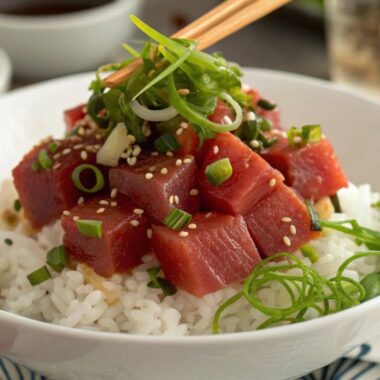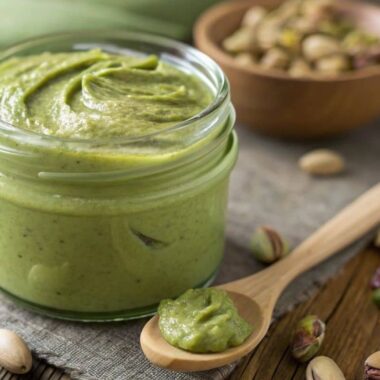Poke bowls are the ultimate food trend. Imagine this: vibrant, fresh fish chunks nestled in a bed of rice, topped with colorful veggies, and drizzled with mouthwatering sauces. It’s like a rainbow in a bowl! But hold on—just because it’s trendy doesn’t mean it’s always the best choice. There are times when you need to hit pause on your poke cravings, and we’re here to tell you why.
Table of Contents
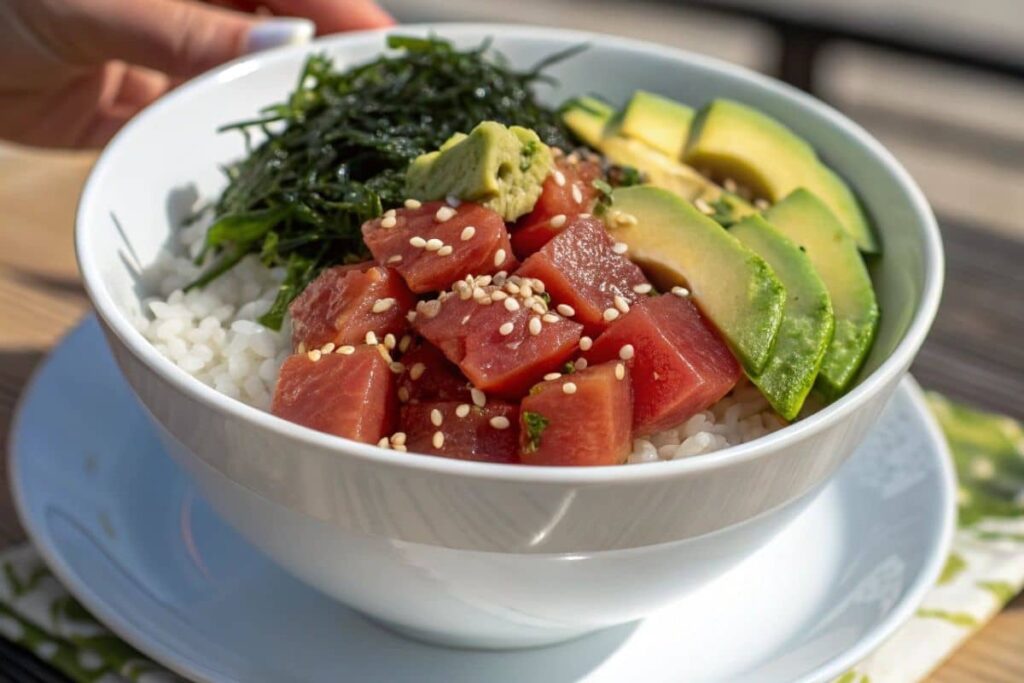
Introduction to Poke: A Hawaiian Favorite
What Exactly Is Poke?
If you haven’t tried it yet, poke (pronounced poh-keh) is a traditional Hawaiian dish featuring raw, diced fish. Originally prepared with ahi tuna, soy sauce, sesame oil, and garnished with seaweed or green onions, this flavorful specialty has gained worldwide popularity. Over time, new variations have emerged, incorporating different proteins, sauces, and toppings, giving it a modern sushi-inspired twist.
Why Is This Dish So Popular?
So, what makes it such a crowd-pleaser? It’s fresh, versatile, and visually stunning—a perfect meal for those who appreciate vibrant flavors. Its light yet satisfying nature makes it a favorite among health-conscious individuals and food lovers alike. However, while it’s easy to enjoy, knowing when to be mindful of your choices is just as important.
Nutritional Benefits of a Fresh Seafood Bowl
A Protein-Packed Meal with Omega-3s
These flavorful bowls offer a high-quality protein boost, especially when made with fresh fish like tuna or salmon. Protein isn’t just essential for muscle growth—it also helps keep you feeling full for longer. Additionally, the omega-3 fatty acids found in seafood are known for supporting brain function, improving memory, and reducing inflammation. A delicious way to fuel your body, right?
Loaded with Essential Vitamins and Minerals
Beyond protein, these vibrant bowls are packed with key vitamins and minerals. You get a healthy dose of vitamin D for strong bones and iron to keep energy levels up. Throw in some avocado or seaweed, and you’re also benefiting from potassium and iodine, essential for overall well-being. But while this dish is full of health perks, it’s also important to be mindful of potential downsides. Let’s take a closer look.
Common Problems with Eating Poke
Raw Fish Contamination: A Major Concern
Here’s the deal: raw fish can sometimes carry bacteria or parasites. It’s like playing roulette—you might get lucky, or you might end up with an upset stomach (or worse). Contaminants like salmonella or listeria can sneak into your bowl if the fish isn’t handled properly.
“Always trust your nose and eyes when it comes to raw fish. If it smells funky or looks dull, stay away!”
Mercury Levels in Certain Fish
Did you know some fish, like tuna, can have high mercury levels? It’s true! Eating too much can lead to mercury poisoning, which is bad news for your nervous system. So, if you’re having poke three times a week, you might want to slow down.
Cross-Contamination Risks
Ever seen a poke bowl place that’s a little too fast with their prep? Cross-contamination can happen when raw fish touches other ingredients or utensils. That’s a one-way ticket to food poisoning, my friend.
When Should You Avoid Eating Raw Fish Bowls?
During Pregnancy or Breastfeeding
Expecting or nursing? It’s best to steer clear of raw fish dishes for now. Uncooked seafood can contain harmful bacteria or parasites, posing risks to both you and your baby. Plus, mercury levels in certain fish can impact fetal brain development, making it safer to opt for fully cooked alternatives.
If You Have a Compromised Immune System
For individuals with weakened immune systems—whether due to conditions like cancer, diabetes, or autoimmune diseases—raw fish may not be the safest choice. Your body might struggle to fight off infections, turning what should be a nourishing meal into a potential health risk.
If You’re Allergic to Seafood
Fish and shellfish allergies can be severe, making it essential to avoid even the smallest traces of contamination. Since these dishes are often prepared in shared kitchens, cross-contact is a real possibility. If you’ve had allergic reactions before, it’s best to stay on the safe side and skip raw seafood altogether.
Health Issues Related to Raw Fish Consumption
Parasites in Uncooked Seafood
Yikes! Nobody likes to think about unwanted guests in their food, but raw fish can sometimes harbor parasites like Anisakis, which can lead to severe stomach pain, nausea, and vomiting. Not exactly the kind of surprise you want in your meal! Proper handling and freezing can reduce the risk, but it’s still something to keep in mind.
Risk of Foodborne Illnesses
Uncooked seafood carries a higher risk of foodborne illnesses, and the effects can range from mild digestive discomfort to serious bacterial infections. Some, like vibrio infections, can even become life-threatening in individuals with weakened immune systems. Ensuring that fish is sourced from reputable suppliers and stored at safe temperatures is crucial for reducing this risk.
Excess Sodium from Sauces
Let’s talk about those flavorful toppings! While soy sauce, ponzu, and spicy mayo add incredible taste, they’re often packed with sodium. Regularly consuming high-sodium meals can contribute to high blood pressure and cardiovascular issues. If you’re a frequent fan of these bowls, consider asking for low-sodium options or balancing your intake with fresh, unsalted ingredients.
Nutrition Facts: A Closer Look at Poke Bowls
| Component | Amount (Per Serving) |
|---|---|
| Calories | 500-700 kcal |
| Protein | 25-35 g |
| Omega-3 Fatty Acids | 1.5-3 g |
| Sodium | 800-1200 mg |
| Carbohydrates | 50-70 g |
As you can see, poke bowls can be a balanced meal if eaten responsibly. But the risks of raw fish shouldn’t be ignored.
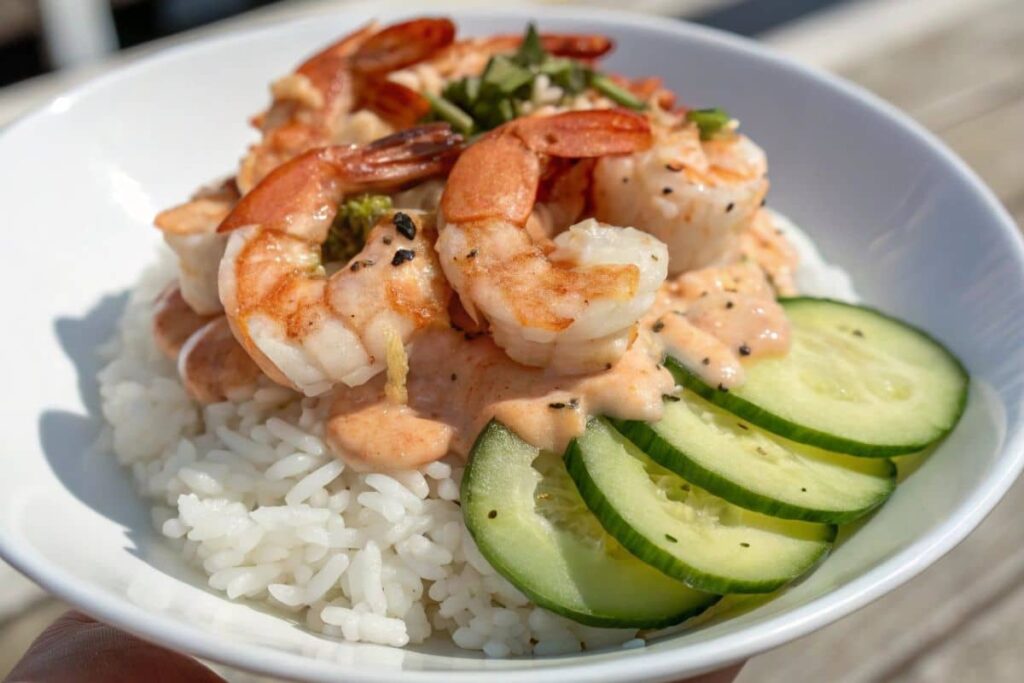
Tips to Minimize Risks When Eating Raw Fish Bowls
Choosing Fresh and High-Quality Ingredients
If you want to enjoy this dish safely, start by selecting the freshest fish possible. Always opt for sushi-grade seafood, which is carefully handled and frozen at ultra-low temperatures to eliminate parasites. Not sure what makes a fish sushi-grade? Think of it as the VIP treatment—it’s undergone strict safety measures to ensure it’s safe for raw consumption.
Storing and Handling Fish Properly
Raw fish needs proper storage and handling to stay safe. Always keep it refrigerated until just before serving, and clean all utensils and cutting boards thoroughly to prevent cross-contamination. Leaving fish out too long is like forgetting milk in the sun—just don’t do it!
Opting for Cooked Alternatives
Not comfortable with raw fish? No problem! You can still enjoy the same fresh and flavorful experience by swapping in cooked shrimp, grilled chicken, or tofu. These options provide great texture and taste while eliminating the risks associated with uncooked seafood. Plus, experimenting with different proteins can add a fun twist to your bowl!
How to Identify Unsafe Poke
Signs of Spoiled Fish
Not all fish is created equal. Spoiled fish can ruin your poke experience—and your health. Look out for slimy textures, dull colors, and that unmistakable “off” smell. Fresh fish should smell like the ocean, not like something crawled out of it.
“When in doubt, throw it out. It’s better to lose a few dollars than to risk food poisoning.”
Unhygienic Restaurant Practices
If you’re eating out, pay attention to the cleanliness of the restaurant. Is the staff handling food with gloves? Does the fish look fresh? Trust your gut (not literally) when something feels off. A good rule of thumb: if the place looks sketchy, skip it!
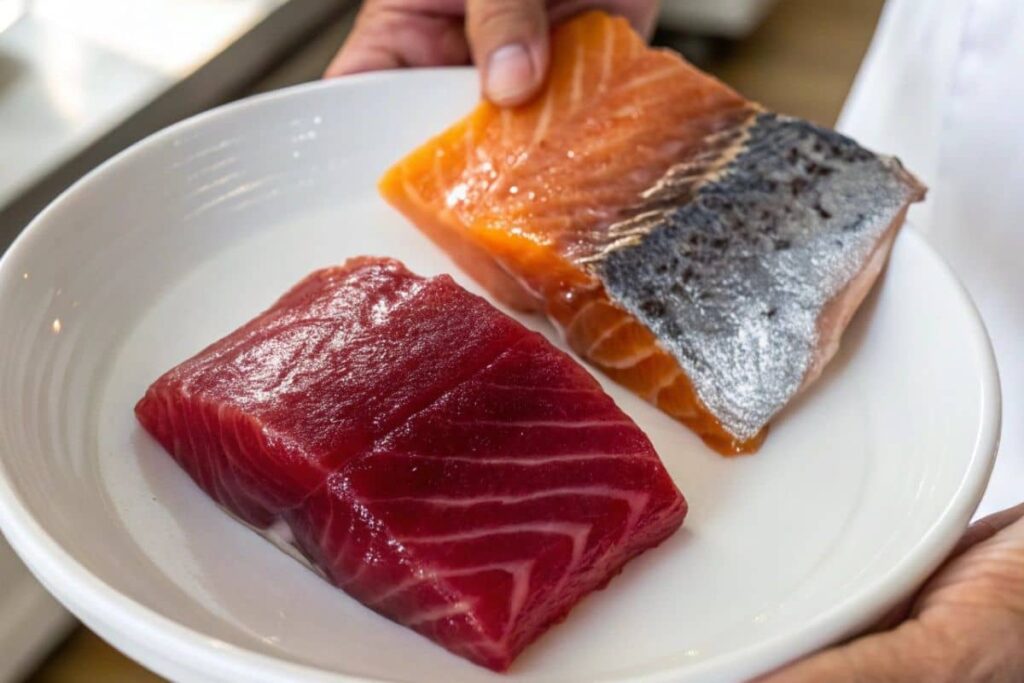
Common Myths About Poke Safety
Myth: Freezing Fish Eliminates All Risks
While freezing fish does kill most parasites, it doesn’t make it completely risk-free. Some bacteria and toxins can survive freezing, so don’t assume frozen fish is 100% safe. Think of it as wearing sunscreen—you’re protected, but not invincible.
Myth: All Poke is Equally Healthy
Not all poke bowls are created equal. Some are packed with sugary sauces, fried toppings, and calorie-heavy sides. If you’re aiming for a healthy meal, stick to whole, fresh ingredients and go easy on the sauces. Your waistline will thank you!
Alternatives to Traditional Poke for Sensitive Groups
Vegetarian and Vegan Poke Options
Who says poke has to include fish? Try a plant-based version with diced tofu, marinated mushrooms, or even watermelon (yes, watermelon!). These options are not only safe for sensitive groups but also super tasty. Plus, they’re an easy way to get creative in the kitchen.
Cooked Seafood Alternatives
If you still crave that ocean vibe, opt for cooked seafood like shrimp, crab, or seared tuna. It’s the perfect compromise between flavor and safety. Bonus: cooked options are less likely to cause allergic reactions compared to raw fish.

How to Report Foodborne Illness from Poke
Steps to Take If You Suspect Food Poisoning
Got sick after eating poke? First, hydrate like it’s your full-time job. Then, document your symptoms and where you ate the poke. Contact your local health department—they need to know about potential outbreaks to protect others.
Informing Local Health Authorities
Most health departments have an online form or hotline for reporting foodborne illnesses. Be specific about what you ate, when you ate it, and where. Your report could prevent others from getting sick, so don’t hesitate to speak up.
Final Thoughts on Poke Consumption
Balancing Safety and Enjoyment
At the end of the day, this Hawaiian delicacy can be a delicious and nutritious treat if you’re mindful about where and how you eat it. Think of it like riding a bike—you wouldn’t do it without a helmet, right? The same logic applies here: take precautions, and you’ll be fine.
A Treat Worth Savoring
While these bowls of fresh ingredients are undeniably tasty, moderation is key. Enjoy them occasionally, savor the flavors, and always prioritize your health. After all, no food trend is worth risking your well-being. So, go ahead and treat yourself—but do it wisely!
“Eating raw seafood is like diving into the ocean—exhilarating, but best enjoyed with care.”
FAQ: When Should You Not Eat Poke?
1. Can I eat a shrimp poke bowl if I’m avoiding raw fish?
Absolutely! If raw fish isn’t your thing or you’re concerned about safety, a shrimp poke bowl is a fantastic alternative. It features cooked shrimp instead of raw fish, giving you the same delicious poke experience with less risk. Just ensure the shrimp is fresh and properly cooked for the best taste and safety.
2. What goes well in a poke bowl to make it safer?
If you’re looking for ways to make your poke bowl both tasty and safer, focus on fresh, high-quality ingredients. Toppings like avocado, cucumber, and edamame are excellent choices. Cooked proteins like shrimp or tofu are also great options. For more ideas, check out What goes well in a poke bowl? and discover endless combinations that are as safe as they are delicious.
3. What does a poke bowl consist of, and when should I avoid it?
A traditional poke bowl usually consists of a base (like rice or greens), a protein (such as raw fish), and toppings (like seaweed, veggies, and sauces). However, you should avoid poke bowls if you’re pregnant, have a compromised immune system, or are allergic to seafood. Opt for cooked or plant-based alternatives in these situations to enjoy the flavors without the risks.
4. Is it safe to eat this dish regularly?
While this Hawaiian specialty can be a healthy choice, eating it too often may expose you to potential risks. Certain types of fish, like tuna, contain mercury, and the sauces can be high in sodium. Moderation is essential. If you’re a big fan of these bowls, consider balancing your meals with cooked proteins or vegetarian alternatives. Staying informed about the seafood you’re consuming is the best way to enjoy this trendy meal safely.
5. How can I tell if a poke bowl isn’t safe to eat?
Unsafe poke bowls often have fish that smells bad, looks dull, or has a slimy texture. Always check the freshness of your ingredients and avoid places with questionable hygiene.
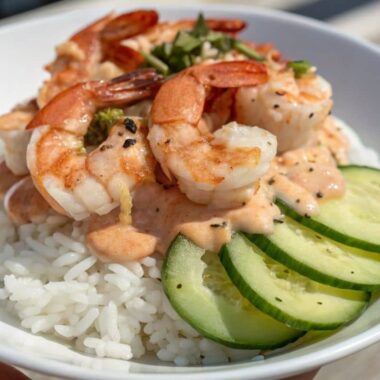
Poke Bowl
Ingredients
Base Ingredients
- 2 cups cooked rice Use sushi rice for authenticity.
Main Ingredients
- 1 cup diced sushi-grade raw fish (ahi tuna or salmon) Choose the freshest option available.
- 1/2 cup edamame Shelled or unshelled depending on preference.
- 1/2 cup sliced avocado Choose ripe avocados.
- 1 cup mixed vegetables (cucumber, seaweed, etc.) Use colorful veggies for a vibrant look.
Sauces
- 2 tablespoons soy sauce Use low-sodium soy sauce if preferred.
- 1 tablespoon sesame oil Enhances flavor and adds richness.
- 1 tablespoon spicy mayo Optional for those who like a spicy kick.
Instructions
Preparation
- Prepare 2 cups of sushi rice according to package instructions.
- While the rice is cooking, cube the sushi-grade fish.
- Slice the avocado and prepare your mixed vegetables.
- In a small bowl, mix the soy sauce and sesame oil for dressing.
- Prepare any additional toppings such as spicy mayo.
Assembly
- Once the rice is cooked, divide it between two bowls.
- Top each bowl with diced raw fish, mixed vegetables, and avocado.
- Drizzle with the sauce mixture and add any additional toppings.
- Serve immediately and enjoy!

